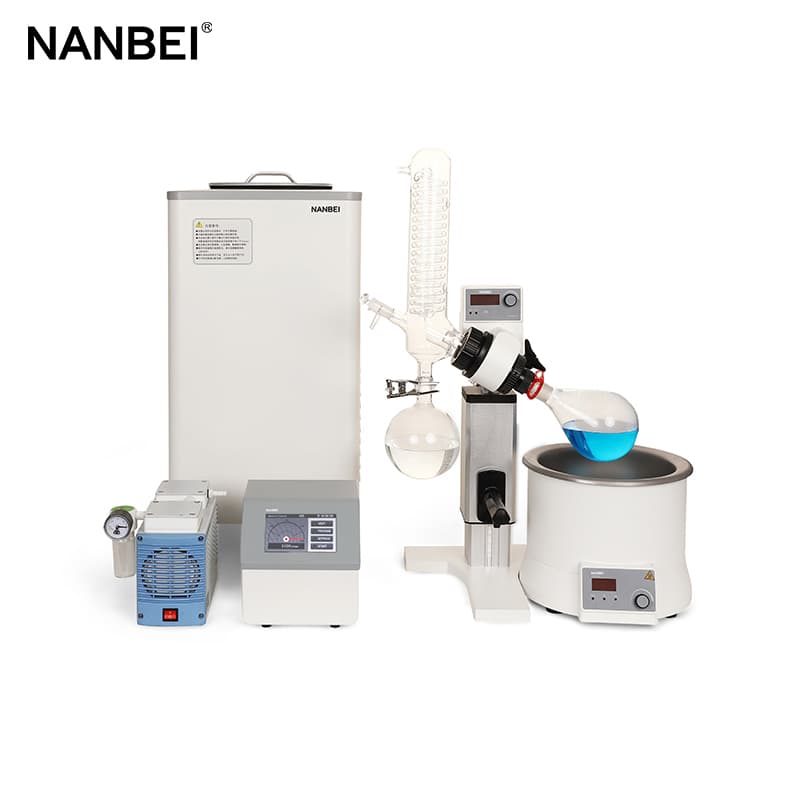 Mobile: +86 15890068607
Mobile: +86 15890068607
 Email: nanbeiinstrument@nanbei-china.com
Email: nanbeiinstrument@nanbei-china.com
 Mobile: +86 15890068607
Mobile: +86 15890068607
 Email: nanbeiinstrument@nanbei-china.com
Email: nanbeiinstrument@nanbei-china.com
The enclosed space of a large rotary evaporator consists of evaporation bottle, evaporation tube, sealing ring, condensation tube and other glass components, vacuum buffer bottle, vacuum pump and vacuum pipelines. Among them, the key and changing factors that affect the system vacuum are: vacuum pump, seals ring and vacuum tube.

The structural principle vacuum rotary evaporator:
1. The distillation flask is an eggplant-shaped or round-bottomed flask with a standard ground mouth interface. It is connected to the pressure reducing pump through a highly reflux serpentine condenser tube. The other opening of the reflux condenser tube is connected to the receiving flask with a ground mouth interface to collect the evaporated organic solvent.
2. There is a three-way piston between the condenser tube and the pressure reducing pump. When the system is connected to the atmosphere, the distillation flask and the liquid-collecting flask can be removed to transfer the solvent. When the system is connected to the pressure reducing pump, the system should In a state of decompression.
3. When using, the pressure should be reduced first, and then the motor should be started to rotate the distillation flask. At the end, the machine should be stopped first, and then ventilate to prevent the distillation flask from falling off during rotation. As the heat source for distillation, it is often equipped with a corresponding constant temperature water tank.
4. Through electronic control, the flask is rotated at a suitable constant speed to increase the evaporation area. The evaporation flask is placed under negative pressure through a vacuum pump. The evaporation flask is placed in a water bath for constant temperature heating while rotating, and the solution in the bottle is heated, diffused and evaporated in the rotating flask under negative pressure.
5. The rotary evaporator can be sealed and decompressed to standard millimeters of mercury. A heating bath is used to heat the solvent in the distillation flask, and the heating temperature can be close to the boiling point of the solvent. It can also be rotated at a standard speed to make the solvent form a film and increase the evaporation area.
6. In addition, under the action of a high-efficiency cooler, hot steam can be quickly liquefied and the evaporation rate is accelerated.
* HOT ARTICLE
Welcome to the official website of the Nanbei Group *